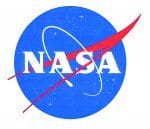NASA to launch two missions — GOLD and ICON to explore the ionosphere
The National Aeronautics and Space Administration (NASA) will launch two missions — GOLD and ICON later this year. They will team up to explore the ionosphere, located 96 km above Earth’s surface.
The Global-scale Observations of the Limb and Disk (GOLD) mission will be launched in January 2018 and Ionospheric Connection Explorer (ICON) will be launched later this year.
Key Facts
The two missions will be complementary to each other. ICON will launched in low-Earth orbit (LEO) located at 560 km above Earth, like a close-up camera. GOLD will be launched in geostationary orbit over Western Hemisphere, about 35,398 km above earth. It will help in full-disk view of ionosphere and upper atmosphere beneath it every half hour.
The two missions can cooperate with each other when ICON passes through GOLD’s field of view and each mission can get snapshot of same region. This overlap in their data will make it easier to identify reasons for changes in upper atmosphere at a given time.
One of missions’ goals is to measure how upper atmosphere changes in response to hurricanes and geomagnetic storms. GOLD will also explore how upper atmosphere reacts to geomagnetic storms, which are temporary disturbances of Earth’s magnetic field caused by solar activity.
At night, GOLD will examine disruptions in ionosphere, which are mainly dense, unpredictable bubbles of charged gas that appear over equator and tropics, sometimes interfere with radio communications.
Ionosphere
The ionosphere is located between 60 and 400 km above the mesopause. It contains electrically charged particles known as ions, and hence, it is known as ionosphere. Radio waves transmitted from the earth are reflected back to the earth by this layer and is used for radio propagation to distant places on the Earth. In this layer temperature starts increasing with height.
Month: Current Affairs - January, 2018


